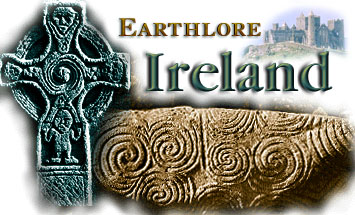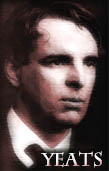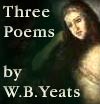
|
Earthlore Introduction | Earthlore Contents | Ireland Introduction | Ireland Contents | E-mail
 |
|
One of the characteristics of Irish poetry according to Thomas MacDonagh is a certain naiveté. “An Irish poet,” he says, “if he be individual, if he be original, if he be national, speaks, almost stammers, in one of the two fresh languages of this country; in Irish (modern Irish, newly schooled by Europe), or in Anglo-Irish, English as we speak it in Ireland…. Such an Irish poet can still express himself in the simplest terms of life and of the common furniture of life.” 5 Thomas MacDonagh is speaking here of the poetry that is being written to-day, of the poetry that comes out of a community that is still mainly agricultural, that is still close to the soil, that has but few possessions. And yet, with this naiveté there must go a great deal of subtility. “Like the Japanese,” says Kuno Meyer, “the Celts were always quick to take an artistic hint; they avoid the obvious and the commonplace; the half-said thing to them is dearest.” 6 This is said of the poetry written in Ireland many centuries ago, but the subtility that the critic credits the Celts with is still a racial heritage.  Irish poetry begins with a dedication—a dedication of the race to the land. The myth of the invasion tells that the first act of the invaders was the invoking of the land of Ireland—its hills, its rivers, its forests, its cataracts. Amergin, the first poet, pronounced the invocation from one of their ships, thereby dedicating the Milesian race to the mysterious land. That dedication is in many poems made since Amergin’s time—the dedication of the poet to the land, of the race to the land. —Padraic Colum, Anthology of Irish Verse, 1922 (5) Literature in Ireland. (6) Ancient Irish Poetry. |
|
|
May You Find That Which Your Heart Hath ever Sought!
 |
| Development & Production Credits |
| Theme
Editor : Nicole Blackford —
Primary Text : Rhey Cedron Art Direction : Thierry Alberto — Art Research : Malcolm Hurrell Principal Photography : Rhey Cedron Structural Design : Mark Nelson — Research Assistant : Walter McCrae Support Production : Henry Craig, Clara Kelly |
| E-mail : queries@elore Your questions and comments are always welcome! Learn more about the Earthlore story, upcoming web features and future cultural projects. Ask to receive your free newsletter |
 |